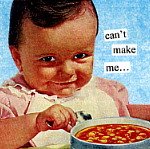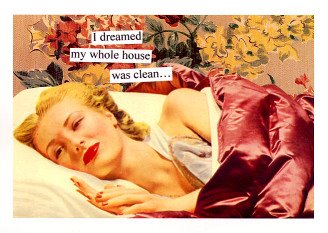
Adderland, a magical place where nothing makes sense, every day is a challenge, and we sometimes feel that we, the NON-Adders, are losing our minds.


 I hadn't planned on making this just a "mercury poisions ya" blog-- lately, however, I just haven't had a whole lot of time to post indiscriminately about general life, so the only time I have checked in was when something *serious* really hit me.
I hadn't planned on making this just a "mercury poisions ya" blog-- lately, however, I just haven't had a whole lot of time to post indiscriminately about general life, so the only time I have checked in was when something *serious* really hit me. Welcome to the Orwellian nightmare- WALLMART is going to be deciding a LOT of things in your future- including that it is OK to poison our kids in Santa Clara for their idea of ecological security.
Welcome to the Orwellian nightmare- WALLMART is going to be deciding a LOT of things in your future- including that it is OK to poison our kids in Santa Clara for their idea of ecological security.

 Every time I start to think that maybe this is just "a scare", I get more information sent from enlightened folks. Then I reflect on how many "conservatives" laughed their hearts out at "Earth Day", and scoffed at Global Warming, voted against Environmental Protection acts, and actively blocked even the smallest of efforts if they in ANY way impacted revenues of anyone, anywhere, anytime.
Every time I start to think that maybe this is just "a scare", I get more information sent from enlightened folks. Then I reflect on how many "conservatives" laughed their hearts out at "Earth Day", and scoffed at Global Warming, voted against Environmental Protection acts, and actively blocked even the smallest of efforts if they in ANY way impacted revenues of anyone, anywhere, anytime. Information provided by: Ohio Environmental Protection Agency,
Information provided by: Ohio Environmental Protection Agency,

(Excerpts from Wikipedia): Mercury is also called quicksilver. A heavy, silvery, transition metal, mercury is one of five elements that are liquid at or near room temperature. Mercury is used in thermometers, barometers and other scientific apparatus, although the use of mercury in thermometers has been largely phased out in clinical and scientific environments in the interests of health and safety due to the toxicity of the element. Mercury is mostly obtained by reduction from the mineral cinnabar. Its high density allows things such as billiard balls to float with less than 20% of their volume submerged. Mercury is used primarily for the manufacture of industrial chemicals or for electrical and electronic applications. It is used in some thermometers, especially ones which are used to measure high temperatures (In the United States, non-prescription sale of mercury fever thermometers was banned by a number of different states and localities). Other uses: sphygmomanometers, Thimerosal, an organic compound used as a preservative in vaccines and tattoo inks (Thimerosal in vaccines), barometers, diffusion pumps, coulometers, and many other laboratory instruments, In some gaseous electron tubes, mercury arc rectifier , Gaseous mercury is used in mercury-vapor lamps and some "neon sign" type advertising signs and fluorescent lamps, as well as coolant for nuclear reactors. However sodium is proposed for reactors cooled with liquid metal, because the high density of mercury requires much energy for circulating the coolant.
Mercury was once used in the amalgamation process of refining gold and silver ores. The practice is continued in Brazil. Mercury is still used in some cultures for folk medicine and ceremonial purposes which may involve ingestion, injection, or the sprinkling of elemental mercury around the home.
Alexander Calder built a mercury fountain for the Spanish Pavilion at the 1937 World's Fair in Paris.
Miscellaneous uses include mercury switches, mercury cells for sodium hydroxide and chlorine production, electrodes in some types of electrolysis, batteries (mercury cells), and catalysts, insecticides, dental amalgams/preparations and liquid mirror telescopes.
Historical usesare preserving wood, developing daguerreotypes, silvering mirrors, anti-fouling paints (discontinued in 1990), herbicides (discontinued in 1995), cleaning, and in road leveling devices in cars. Mercury compounds have been used in antiseptics, laxatives, antidepressants, and antisyphilitics. It was also allegedly used by allied spies to sabotage German planes. A mercury paste was applied on bare aluminium, causing the metal to rapidly corrode. This would cause the planes to mysteriously fall apart.
In Islamic Spain it was used for filling decorative pools and for fountains.
Mercury was known to the ancient Chinese and Hindus and was found in Egyptian tombs that date from 1500 BC. In China, India and Tibet, mercury use was thought to prolong life, heal fractures, and maintain generally good health. The ancient Greeks used mercury in ointments and the Romans used it in cosmetics. By 500 BC mercury was used to make amalgams with other metals.
The Indian word for alchemy is Rassayana which means ‘the way of mercury.’ Alchemists often thought of mercury as the first matter from which all metals were formed. Different metals could be produced by varying the quality and quantity of sulfur contained within the mercury. An ability to transform mercury into any metal resulted from the essentially mercurial quality of all metals. The purest of these was gold, and mercury was required for the transmutation of base (or impure) metals into gold. This was a primary goal of alchemy, either for material or spiritual gain.
The element was named after the Roman god Mercury, known for speed and mobility. It is associated with the planet Mercury. From the mid-18th to the mid-19th centuries, a process called "carroting" was used in the making of felt hats. Animal skins were rinsed in an orange solution of the mercury compound mercuric nitrate, Hg(NO3)2•2H2O. This process separated the fur from the pelt and matted it together. This solution and the vapors it produced were highly toxic. Its use resulted in widespread cases of mercury poisoning among hatters. Symptoms included tremors, emotional lability, insomnia, dementia and hallucinations. The United States Public Health Service banned the use of mercury in the felt industry in December 1941. The psychological symptoms associated with mercury poisoning may have inspired the phrase "mad as a hatter"; see the hatter article on the origin of the phrase.
Elemental mercury is the main ingredient in dental amalgams. Controversy over the health effects from the use of mercury amalgams began shortly after its introduction into the western world, nearly 200 years ago. In 1843, The American Society of Dental Surgeons, concerned about mercury poisoning, required its members to sign a pledge that they would not use amalgam. In 1859, The American Dental Association was formed by dentists who believed amalgam was "safe and effective." The ADA, "continues to believe that amalgam is a valuable, viable and safe choice for dental patients," as written in their statement on dental amalgam. In 1993, the United States Public Health Service reported that, "amalgam fillings release small amounts of mercury vapor," but in such a small amount that it, "has not been shown to cause any … adverse health effects."
Mercury has been used in the treatment of illnesses for centuries. Mercury(I) chloride and mercury(II) chloride were popular compounds. Mercury was included in the treatment of syphilis as early as the 16th century, before the advent of antibiotics. "Blue mass," a small pill in which mercury is the main ingredient, was prescribed throughout the 1800s for numerous conditions including, constipation, depression, child-bearing and toothaches. In the early 20th century, mercury was administered to children yearly as a laxative and dewormer. It was a teething powder for infants and some vaccines have contained the preservative Thimerosal (partly ethyl mercury) since the 1930s (FDA report). Mercury(II) chloride was a disinfectant for doctors, patients and instruments.
Mercury in the form of cinnabar remains an important component of Chinese, Tibetan, and Ayurvedic medicine. Today, mercuric medicines and devices are generally considered hazardous. Neither are used to the extent they were in the past. Thermometers and sphygmomanometers containing mercury were invented in the early 18th and late 19th centuries, respectively. In the early 21st century, their use is declining and has been banned in some countries, states and medical institutions. In 2002, the U.S. Senate passed legislation to phase out the sale of non-prescription mercury thermometers. In 2003, Washington and Maine became the first states to ban mercury blood pressure devices (HCWH News release). In 2005, mercury compounds are found in some OTC medications, including topical antiseptics, stimulant laxatives, diaper rash ointment, eye drops and nose sprays. The FDA has "inadequate data to establish general recognition of the safety and effectiveness," of the mercury ingredients in these products (Code of federal regulations).
Mercury Ore is an extremely rare element in the earth's crust, having an average crustal abundance by mass of only 0.08 parts per million. However, because it does not blend geochemically with those elements that comprise the majority of the crustal mass, mercury ores can be extraordinarily concentrated considering the element's abudance in ordinary rock. The richest mercury ores contain up to 2.5% mercury by mass, and even the leanest concentrated deposits are at least 0.1% mercury (12,000 times average crustal abundance). This makes mercury ore the most easily depleted of all metal ores. Depletion of mercury ores have been a major concern since the 1960s and it is now almost certain that the last mineable deposits were discovered in Algeria in the mid-1970s. Since the early 1970s, total world production of mercury has fallen from 9,000 tonnes to 1,600 tonnes due to depletion of reserves.
It is found either as a native metal (rare) or in cinnabar, corderoite, livingstonite, Most present-day production occurs in Spain, Kyrgyzstan, China and Tajikistan. Over 100,000 tons of mercury were mined from the region of Huancavelica, Peru, over the course of three centuries following the discovery of deposits there in 1563; mercury from Huancavelica was crucial in the production of silver in colonial Spanish America. Many former ores in Italy, Slovenia, the United States and Mexico which once produced a large proportion of the world's supply have now been completely mined out. The metal is extracted by heating cinnabar in a current of air and condensing the vapor.
Mercury(I) chloride (AKA calomel) is sometimes still used in medicine and acousto-optical filters
Mercury(II) chloride (which is very corrosive, sublimates and is a violent poison)
Mercury fulminate, (a detonator widely used in explosives),
Mercury(II) sulfide (AKA cinnabar mercuric ore still used in oriental medicine, or vermilion which is a high-grade paint pigment),
Mercury(II) selenide a semi-metal,
Mercury(II) telluride a semi-metal, and
Mercury cadmium telluride and mercury zinc telluride, infrared detector materials.
Organic mercury compounds are also important. Methylmercury is a dangerous compound that is widely found as a pollutant in water bodies and streams.
There are seven stable isotopes of mercury with Hg-202 being the most abundant (29.86%). The longest-lived radioisotopes are Hg-194 with a half-life of 444 years, and Hg-203 with a half-life of 46.612 days. Most of the remaining radioisotopes have half-lifes that are less than a day.
Preindustrial deposition rates of mercury from the atmosphere may be in the range of 4 ng/L in the western USA. Although that can be considered a natural level of exposure, regional or global sources have significant effects. Volcanic eruptions can increase the atmospheric source by 4–6 times. [3]
Mercury enters the environment as a pollutant from various industries:
coal-fired power plants are the largest source (40% of USA emissions in 1999).
Industrial processes that contribute include chlorine, steel, phosphate & gold production ,metal smelting, manufacture & repair of weather and electronic devices, incineration of municipal waste streams , medical applications, including vaccinations , dentistry , cosmetic industries
, laboratory work involving mercury or sulfur compounds.
Mercury also enters into the environment through the disposal (e.g., landfilling, incineration) of certain products. Products containing mercury include: auto parts, batteries, fluorescent bulbs, medical products, thermometers, and thermostats. Due to health concerns toxics use reduction efforts are cutting back or eliminating mercury in such products. For example, most thermometers now use pigmented alcohol instead of mercury. Mercury thermometers are still occasionally used in the medical field because they are more accurate than alcohol thermometers, though both are being replaced by electronic thermometers. Mercury thermometers are still widely used for certain scientific applications because of their greater accuracy and working range.
One of the worst industrial disasters in history was caused by the dumping of mercury compounds into Minamata Bay, Japan. The Chisso Corporation, a fertilizer and later petrochemical company, was found responsible for polluting the bay from 1932–1968. It is estimated that over 3,000 people suffered various deformities, severe mercury poisoning symptoms or death from what became known as Minamata disease.
 Mercury should be handled with care. Containers of mercury should be securely sealed to avoid spills and evaporation. Heating of mercury, or compounds of mercury that may decompose when heated, should always be carried out with adequate ventilation in order to avoid human exposure to mercury vapor.
Mercury should be handled with care. Containers of mercury should be securely sealed to avoid spills and evaporation. Heating of mercury, or compounds of mercury that may decompose when heated, should always be carried out with adequate ventilation in order to avoid human exposure to mercury vapor.So, There you have it. Mercury. In general in America, it is a light pollutant everywhere. And in the many instances we come in contact with it, each is considered "not hazardous" in small amounts. But what of the cumulative amounts?????
We start out with a portion in our bodies as we eat fish, and pass some of it on to our newborns. We are exposed to it in our thermometers, dental work, neon signs and floursecent lamps, and we give it to our children in their vaccinations, over the counter medicines, and they absorb it through everything from nose sprays to diaper rash ointment. We are exposed through insecticides, felt, eye drops, cosmetics, batteries, the insecticides we use, the old felt hats we have, even the paint colors we create with (vermillion). Its used to process municpal waste, as a topical antiseptic, in exsplosives, auto parts, concentrates in fish and shellfish, and leeches to pollute rivers and landscapes. Leading us to be sick- "mad as hatters". And here in Santa Clara County, we have HUGE amounts of it in the environment. The entire Almaden Valley was created for the Almaden Quicksilver Mine, and polluted so much of the valley from the rivers and the waste that much of it is still closed and not accessible for humans. The fish in the area are -to this day- inedible, and the county monitors the waters and the fish everywhere closely. They don't TALK about it much, and school children that learn about the Almaden mines at *all* are never taught that it is a dangerous poision still leeching into their lives, but it is there.
And here in Santa Clara County, we have HUGE amounts of it in the environment. The entire Almaden Valley was created for the Almaden Quicksilver Mine, and polluted so much of the valley from the rivers and the waste that much of it is still closed and not accessible for humans. The fish in the area are -to this day- inedible, and the county monitors the waters and the fish everywhere closely. They don't TALK about it much, and school children that learn about the Almaden mines at *all* are never taught that it is a dangerous poision still leeching into their lives, but it is there.
And then they put it in the vaccinations. What were they thinking? They were thinking in "NONAGGREGATE" terms. Industry- especially the drug industry- likes to evaluate their medicines as unique separate entities, and NEVER consider the aggreagate possibilities. So, put it all together like here in Santa Clara County, and I have no problem at all understanding why we have the highest rate of Autisim in the Nation. It's not a "bubble of unknown origin" or a "technology bubble" or a result of "education and fate". It's in the mountains in the south end of the valley, like a snake slithering out to cover all our children in sickness. If there were no OTHER mercury poisions in their lives, I am sure they would have been OK. But the cumulative effect of all these small amounts is disasterous for our kids. No one can predict how the human body will react to any group of outside chemicals recombining in the cells. As a mother, I think I can seriously say that I do NOT trust my government to make all the proper tests and spend the money to evaluate a new and growing aggregate threat to our children's health if it would mean the possibility of having to control industry in America. Right now, the current thinking of those Washington types is to dismantle the watchdogs and oversight agencies (they have already done it, from meat inspectors that missed Mad Cow to no more office's for reporting collection agency abuses) because "industry can regulate itself". If you love your child, get them privately tested- and if you cannot afford that, ask about that creme... it's prescription, and not toxic or dangerous for those without excess mercury in their systems. Maybe you can save your child.
 I can remember in the beginning, spending more and more time "at school". Helping out was easy- it gave me a chance to keep an eye on the boy, watch what was happening, and do early interventions when I saw things spinning out of control.
I can remember in the beginning, spending more and more time "at school". Helping out was easy- it gave me a chance to keep an eye on the boy, watch what was happening, and do early interventions when I saw things spinning out of control.
I had forgotten what it was like back then-- I was so HURT and angry and pissed and frightened about what this would mean for my little perfect angry wild child.
It got better. I got better. I remember that I hated having to deal with all the people that were CLUELESS. I hated having to spend so much time education myself because the "smart" people who should have known what they were doing were morons. For every 1 that went out of their way to help me as I stumbled along, I had already tripped over 8 that were so ignorant- or lazy- that they just didn't care about yet another mom with another problem child.
THAT was the first- and worst- barrier for us all. The persistant obnoxious preset notion that it is the parent's fault for not being stern enough. They never asked, they never came to me and said "I wonder if more discipline at home would change things?" as if there might be an issue. They just assumed.
&^#%!@)!! all of them. The principal that sat there and asked me "DO you ever say "NO" at your house"?- what a bitch. She got a brain tumor, and lord help me, I didn't feel bad for her at all. She had, in the course of grades 2,3 and 3 months of 4th, sucked all the compassion out of me with her nasty remarks, painful crap she dragged my son through (calling the POLICE???), and failues to follow legal rules for my child (IEP? We don't need to follow your IEP).
Going to About.com brings that time back in a rush. I guess I will have to delve through that in more detail in the days and weeks ahead. Doing it all at once just makes me nauseous. But remember- no matter what they do to you, just smile and flatten their tires in the parking lot. It will make you sleep much better.

Ok, so today I was thinking about the last 10 years. My ADDer son is 12, and my husband is 51, and both got diagnosed about 6 years ago. Life has gotten better in some areas- worse in others.
The FRUSTRATION of dealing with people that just do NOT remember what you said- and SWEAR you never said it!- has lessened. The frustration of the people you love doing the same things over and over no matter how many times you tell them NOT to has not changed. It is a condition, and I know it. I know in my heart that my spouse did not really remember that I specifically said "do not eat those- They are liquor filled and I can only get them once a year and I am saving them". He heard me the time I said it, and probably kept it in his head for about an hour. Then he saw them, and the over-ride issues of his ADD (and possible undiagnosed frontal lobe issues) turned his lust for them on- and his memory dumped my order.
It happens often- over the years, he has eaten whole desserts, entire roasts, and "nibbled" his way through all kinds of special foods or goodies. My son hates him for eating the desserts, for eating "his" candies, for eating whatever his eyes find without a moments thought. He doesn't even feel guilty- for he doesn't remember in his head that there is anyone else here or that anyone else might have wanted the food (or saved it just for themselves). It has been embarassing to offer friends something and find it gone. It has irritated the HELL out of me to go for a midnight snack and find it gone.
It has been embarassing to offer friends something and find it gone. It has irritated the HELL out of me to go for a midnight snack and find it gone.
It has been YEARS of explaining that eating ALL the main course leftovers- but not the veggies, potatoes, fruits, or anything else- means that I do not have anything to serve for dinner and have to cook more meat again. Nothing works. So, we punish him with diatribes. My son and I make mean jokes about it when we put something in the fridge. We threaten as we return from the store, and we hide food about the house.
The first time (heck, 100 times) my son was half way through his McDonalds and left for a while, only to come back and find his burger *eaten*, he was livid and angry and hurt. My spouse felt bad, and has had to make thousands of food runs to get everything from milk to bread to McDonalds-- but to no permanent avail. There is some deep rift there that we cannot breech, and cannot heal. Someday, I am sure my darling boy will find out about Ex_Lax, and his father will find out what "getting it together" really means.
Me? I hide the pastries and buy myself ice cream that they both hate.
Woman, mother, wife, writer, handydandydicerslicer- that's me!
